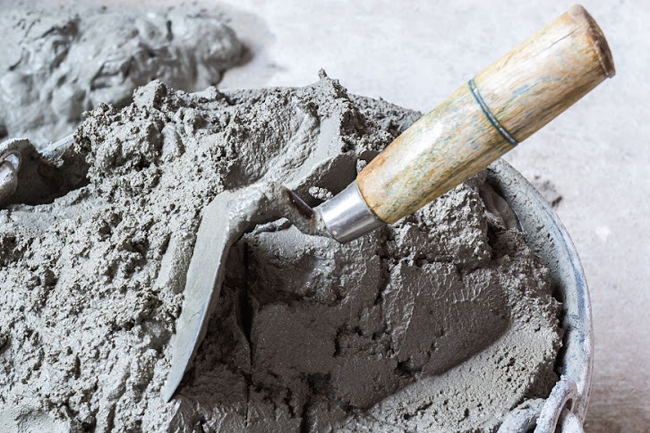Portland cement is by far the most common type of cement in general use around the world. This articles looks at the cement manufacturing process in 4 steps.
Step 1: Mining
The first step of Cement manufacturing process is to quarry the principal raw materials, mainly limestone, clay, and other materials.
Step 2: Crushing
After quarrying the rock is crushed. This involves several stages. The first crushing reduces the rock to a maximum size of about 6 inches. The rock then goes to secondary crushers or hammer mills for reduction to about 3 inches or smaller.
Step 3: Grinding,homogenization and Clinkerization
Next in cement manufacturing process, the crushed rock is combined with other ingredients such as iron ore or fly ash and ground, mixed, and fed to a cement kiln.A kiln is a thermally insulated chamber, a type of oven, that produces temperatures sufficient to complete some process, such as hardening, drying, or chemical changes
The cement kiln heats all the ingredients to about 2,700 degrees Fahrenheit in huge cylindrical steel rotary kilns lined with special firebrick. Kilns are frequently as much as 12 feet in diameter—large enough to accommodate an automobile and longer in many instances than the height of a 40-story building. The large kilns are mounted with the axis inclined slightly from the horizontal.
The finely ground raw material or the slurry is fed into the higher end. At the lower end is a roaring blast of flame, produced by precisely controlled burning of powdered coal, oil, alternative fuels, or gas under forced draft.
As the material moves through the kiln, certain elements are driven off in the form of gases. The remaining elements unite to form a new substance called clinker. Clinker comes out of the kiln as grey balls, about the size of marbles.
Step 4:Cement grinding and storage
Clinker and gypsum for Ordinary Portland Cement(OPC) limestone for limestone cement, and slag for slag cement are all extracted from their respective hoppers and fed to the cement mills. The ball mill grinds the feed to a fine powder in two chambers, namely the first and second chambers.
The two chambers have a certain quantity of ball charge of different sizes from 17mm to 90 mm. The mill discharge is fed to a bucket elevator which takes the material to a separator which separates fine and coarse product. The latter is sent to the mill inlet for regrinding and the final product is stored in concrete silos.
5. Packaging
Cement extracted from silos is conveyed to the automatic electronic packers where it is packed in 50 kg bags and dispatched in trucks.
Cement manufacturing process in summary
- Portland cement is manufactured by heating limestone (calcium carbonate) with other materials (such as clay) to 1,450 °C (2,640 °F) in a kiln, in a process known as calcination that liberates a molecule of carbon dioxide from the calcium carbonate to form calcium oxide, or quicklime.
- The quicklime then chemically combines with the other materials in the mix to form calcium silicates and other cementitious compounds.
- The resulting hard substance, called ‘clinker’, is then ground with a small amount of gypsum into a powder to make ordinary Portland cement, the most commonly used type of cement (often referred to as OPC).
Also Read
7 best paint manufacturing companies in Kenya
How to plaster a wall: Do It Yourself

